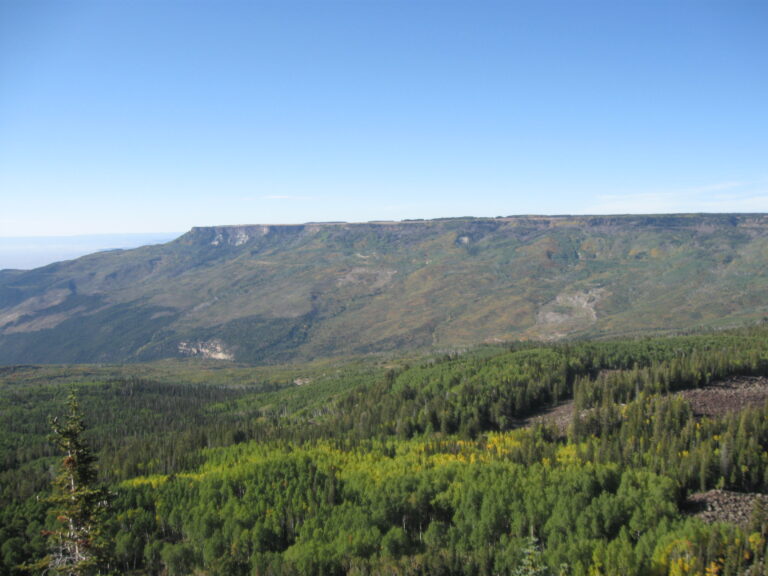 As in many of Colorado’s resort towns, Vail’s summer season technically kicks off on Memorial Day weekend. The Beaver Creek Rodeo is in full-swing and the Teva Mountain Games once again drew a sexy flock of world-class paddlers, climbers and cyclists.
As in many of Colorado’s resort towns, Vail’s summer season technically kicks off on Memorial Day weekend. The Beaver Creek Rodeo is in full-swing and the Teva Mountain Games once again drew a sexy flock of world-class paddlers, climbers and cyclists.
The pictures, of course, show happy people running in shorts and sports bras. What Western Slopers and Front Rangers, who’ve already enjoyed weeks of 80-plus temperatures, can easily forget is that summer in the heart of the Colorado Rockies is short. In Vail, spring equals mud and it takes a long time for the backcountry snow to completely melt. So what’s an anxious trail runner to do?
Simply, stay low. Or as low as you can go in a town that starts at 8,120 feet. Thick mud and crusty, slow-melting snow can sit on the highest trails through June and even July. Some areas stay closed through spring to prevent erosion; others are off-limits because of elk migration and calving. But just between Vail and Minturn, there are enough low, open meadows and wide forest roads to keep any trail runner’s heart rate rising through spring and into summer.

Davos
This four-wheel-drive road climbs about 1,000 feet over four miles, which makes it a manageable route, even for the most inexperienced trail runner. Davos winds around and up the mountainside at a fairly steady grade. With little tree cover along much of the road, this is an excellent choice on sunny days, when running uphill can make spring feel like summer.
Those seeking a hearty workout should run repeats on the final climb, an excruciatingly steep, but short, hill that leads to a few radio towers and views of Edwards, Avon and Minturn. Notch Mountain and Mount of the Holy Cross rise to the south. A left fork just before the hill’s steepest section takes runners to the same turnaround with less of a challenge. It’s also an easier way down.
To park, follow Vail’s North Frontage Road west as it climbs into a neighborhood and becomes Arosa Drive. Make a left on Davos Trail and continue until it dead-ends at a dirt parking lot, which holds about three cars. Parking can also be found at the west end of North Frontage Road. Across the street from this lot is the start of the North Trail, which switchbacks up the hillside and intersects with Davos. The North Trail is a pretty way to access Davos (turn left after the gate), but it remains closed through June 15.

Meadow Mountain
If spring showers and snowstorms showed their faces in May, there’s a good chance the rolling terrain of Meadow Mountain will be as deep green as Colorado can get. This route, which tops out at a hiker’s hut just under 9,800 feet, should be run as a seven-mile out-and-back through June. The Whiskey Creek trail continues beyond the hut for a 7.5 mile (total) loop, but it is closed through July 1 for elk calving.
A gentle double-track trail, once a road that accessed an early-‘70s ski area, starts from the parking lot next to the U.S. Forest Service Minturn Ranger Station. The trail climbs gently through open terrain and past the old ski area, which now serves as a tubing hill and sledding hot-spot. Deep purple and tiny golden wildflowers can cover the meadow as early as May, and abandoned ranch shacks, evidence of the homesteads that dominated the area in the 1800s, dot the landscape. Be sure to stay straight when the West Grouse Creek trail veers off to the left.
Towering aspen groves greet runners about 2 miles up. Climbing higher, the aspen turn to evergreens and West Grouse Creek rushes far below the trail. At the turnaround, runners can see the ski runs at Beaver Creek as well as the back side of Vail Mountain. Though this route never feels too steep, elevation gain averages over 525 feet per mile.
Vail Mountain
A maze of intersecting hiking trails, biking routes, ski runs and service roads covers Vail Mountain. The nice part about running here is knowing that, no matter how turned around or mixed up you get (and it’s easy to do), uphill leads to the top, and downhill lands runners either in the Village or Lionshead.
Vail Mountain is the home of the Teva Trail Running Series, which includes a 10k that starts at 10,000 feet, a hill climb and a half-marathon. Runners can follow the race courses or plan a route using the detailed Vail summer map. But the best route is the one you make up as you go. Since all the trails lead in the same general directions, you can challenge yourself with a steep uphill, recover on a mellow road or crank straight up the ski runs.
It’s a good idea to study the Vail Resorts summer trail map and get a general idea of the two start points (Vail Village or Lionshead), the two mid-mountain points (Mid-Vail or Eagle’s Nest) and the two peak points (Patrol Headquarters and Wildwood). With so many options, it’s easy to avoid the downhill-only mountain bike trails, which are clearly marked. Park in the structure and pick up new maps at the Lionshead ticket office or the Resort Information and Activities Center. Download the trail map here.
Tigiwon Road
When trails are muddy, snowy or closed, great backup options can be the dirt access roads that stem from main highways. Tigiwon Road (Forest Service Road 707), off U.S. Highway 24, just south of Minturn, is one such place. It’s closed to cars through June 20, but hikers and runners can park at the bottom and head uphill, either for the full 8.5 miles to the top, until mud makes passage difficult or until tired legs require a turnaround.

Tigiwon winds south and west toward Mount of the Holy Cross, and ends at the Halfmoon Campground. There, you will find the Halfmoon and Fall Creek trailheads which lead to Mount of the Holy Cross and Notch Mountain.
With so much tree cover, the road doesn’t offer scenic overlooks, but spring is a great time to take advantage of the lack of cars. At just over 1.5 miles, the Cross Creek trailhead sits off to the left. If Tigiwon is dry at this point, it’s worth it to branch off and explore Cross Creek until the trail becomes too muddy, which could happen in as little as a half-mile. The trail runs 14 miles into the Holy Cross Wilderness and provides access to many high-mountain lakes and several other trails.
Other forest service roads that make for great spring out-and-back runs include Homestake Road (FSR 703, off U.S. Highway 24, just south of Redcliff) and Red Sandstone Road (off the North Frontage Road in Vail).
If You Go
Traveling on muddy trails can cause erosion, which changes water runoff and causes damage to the surrounding forest. One mud puddle may not be reason to turn around, but be conscious of spring conditions, when runoff makes trails and roads extra-sensitive.
Always carry food, water and extra clothing. Even in summer, there’s never a guarantee that Colorado temperatures will stay above freezing. Cell service is pretty reliable on Vail Mountain but gets shoddy on forest roads as they wind farther away from town.
U.S. Forest Service Holy Cross Ranger District Office
24747 U.S. Highway 24, Minturn, 970-827-5715
Vail Resorts
2007 trail maps will be available beginning June 20 at the Information and Activities Center, located between Bart & Yeti’s and Montauk in Lionshead. (970) 476-9090 www.vail.com
From the Editors: We spent a heap of time making sure this story was accurate when it was published, but of course, things can change. Please confirm the details before setting out in our great Centennial State.



